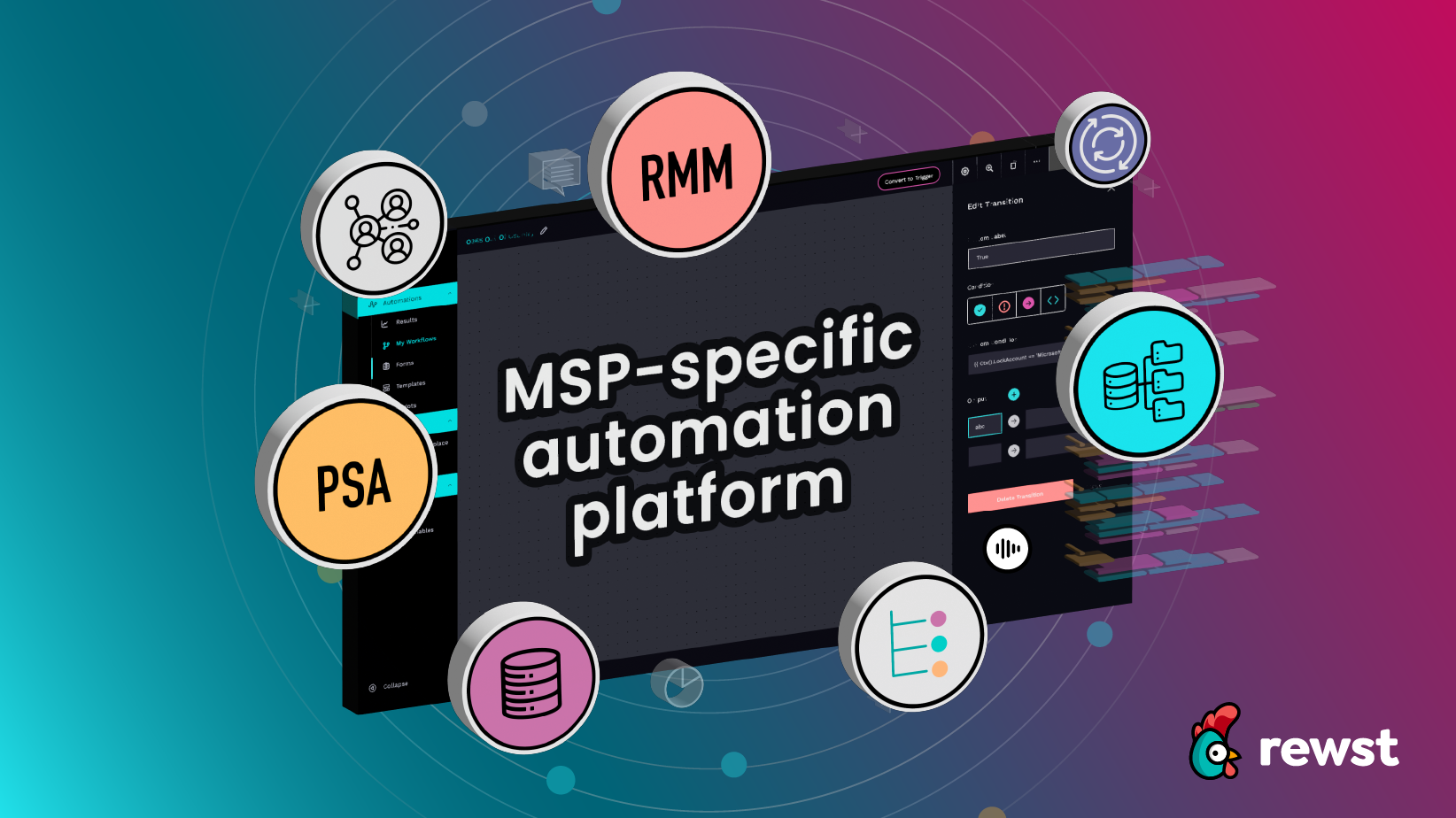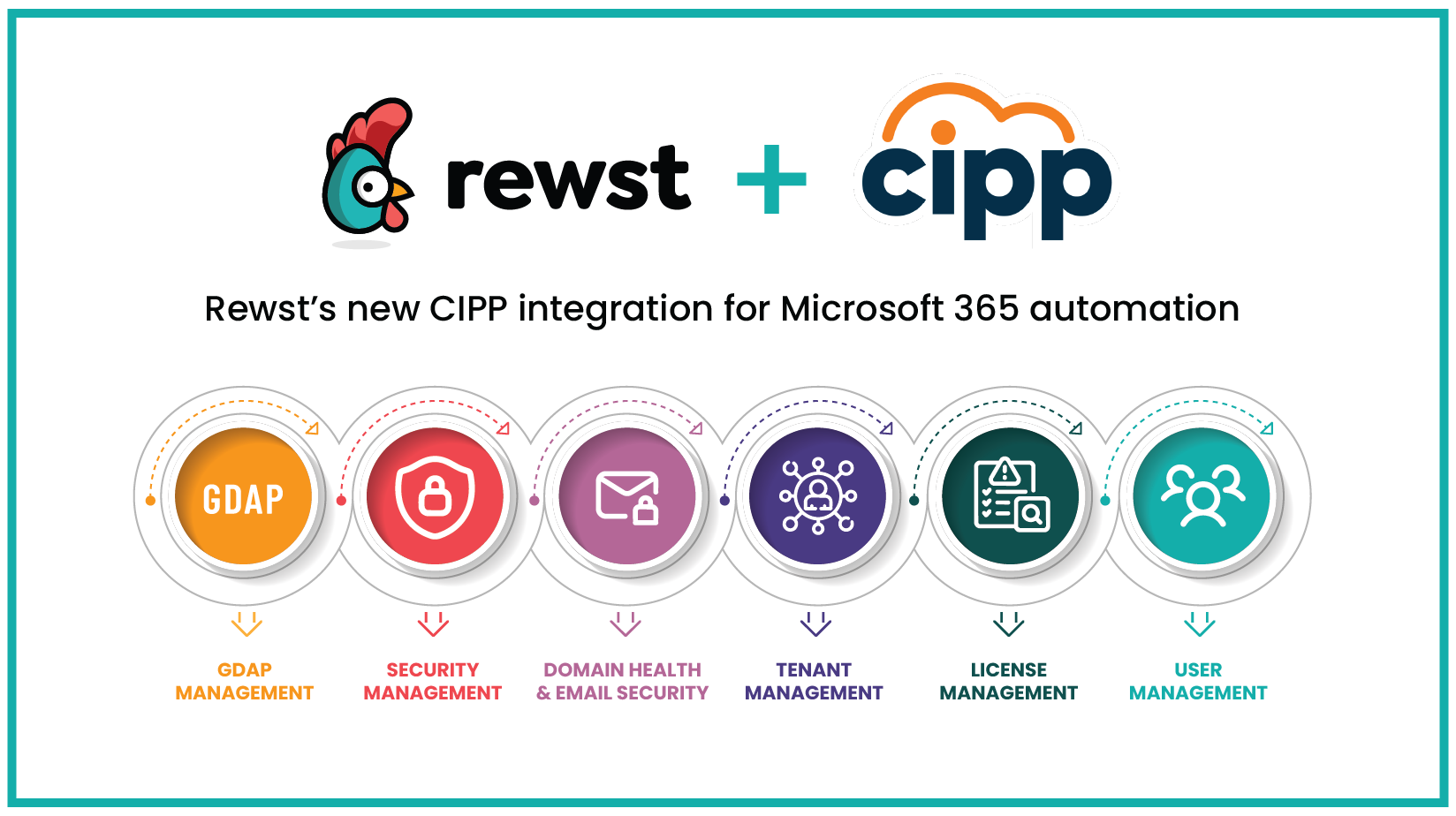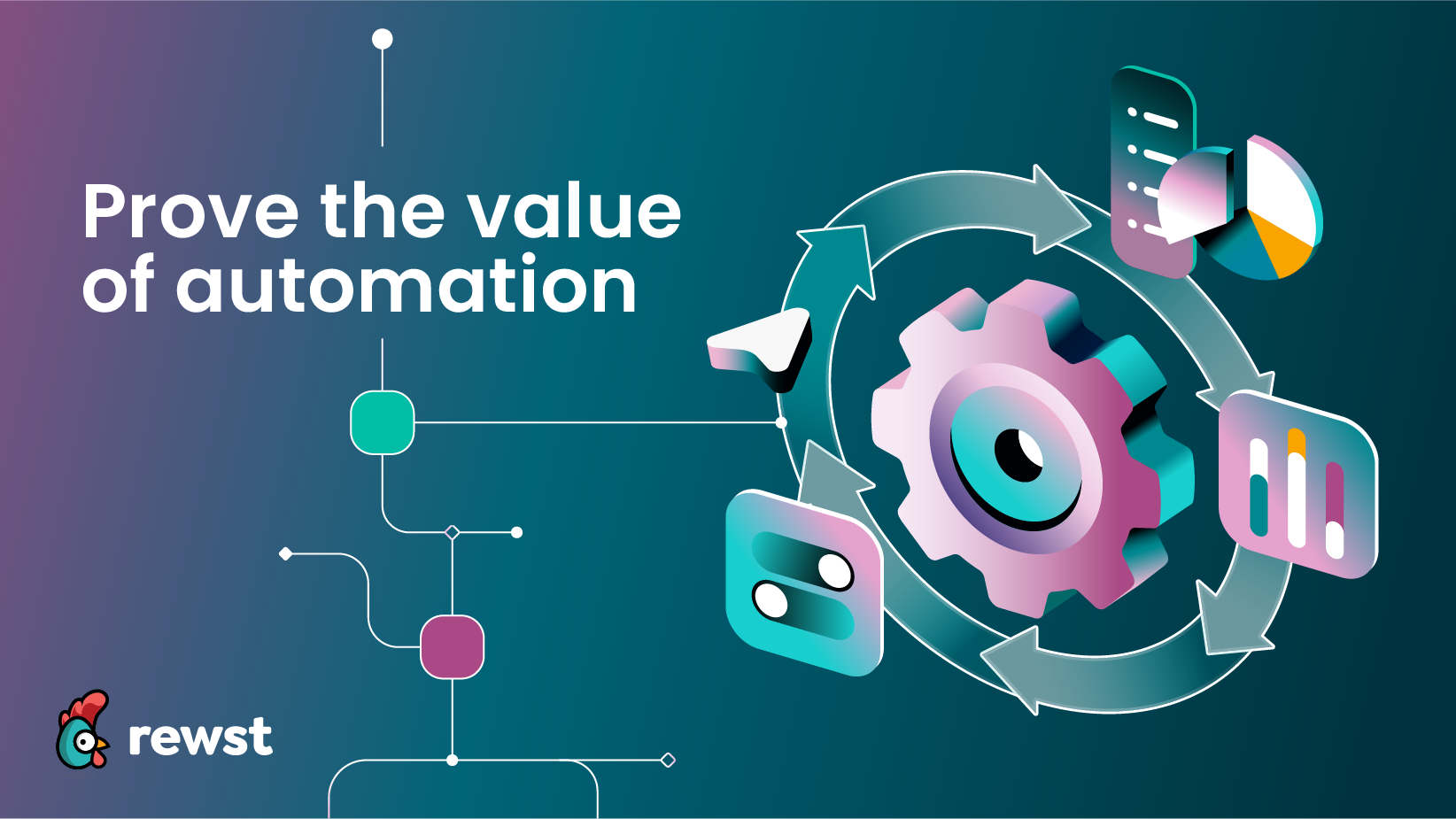Busting the myth: Why general-purpose automation isn't enough for MSPs

General-purpose automation platforms can appear appealing to MSPs: they’re widely available, viewed as inexpensive, and considered flexible enough for simple tasks. For teams already scripting in their RMM, leaning on those tools more heavily may even seem like the natural next step.
While these platforms can handle isolated tasks or basic internal workflows, they weren’t designed for MSP operations. The gaps don’t always show immediately. However, the weaknesses become clear once an MSP tries to scale automation across multiple clients, integrate with its PSA or RMM, or standardize documentation processes. The lack of MSP-specific integrations, the absence of multi-tenant architecture, and the heavy maintenance burden mean that what once looked “good enough” quickly becomes costly and unsustainable.
Where general-purpose tools fall short
General-purpose platforms and MSP-specific platforms have fundamentally different design goals.
General-purpose automation platforms excel in their breadth, connecting thousands of SaaS apps and allowing users to create almost any workflow. However, this breadth doesn’t translate into depth. These platforms typically lack in-depth functionality for Professional Services Automation (PSA), Remote Monitoring and Management (RMM), or documentation tools—the essential systems that Managed Service Providers (MSPs) depend on.
Workflows often require manual stitching together, with users responsible for custom authentication, API interactions, and ongoing upkeep. They also lack the technical architecture for multi-tenancy, meaning there’s no built-in way to separate data or client contexts.
On top of that, these platforms skew heavily developer-leaning, requiring knowledge of languages like JavaScript, custom expressions, and the expertise to manage integrations and maintain them over time. Understanding how to simulate multi-tenant scenarios in tools not designed for it raises the bar even further.
RMM scripting has its own limitations. While powerful for device-level or endpoint tasks, scripting doesn’t scale across multiple systems or business processes. Scripts tend to be brittle and siloed, and they don’t extend well into client-facing services like onboarding, billing, or compliance.
An MSP-specific automation platform addresses these realities by including native integrations with PSAs, RMMs, documentation tools, compliance systems, and licensing providers. It is designed with multi-tenant capabilities, allowing users to manage multiple client environments in one place. It also has prebuilt automations for common MSP scenarios like onboarding, offboarding, license management, and ticket triage. These features lower the technical barrier, enabling Tier 1 and Tier 2 techs to build and manage workflows using familiar tools while supporting advanced customization when needed.
The hidden costs MSPs can’t ignore
General-purpose platforms can appear cost-effective on paper. Pricing tiers are often approachable; some are even open-source or free to run. But the “cheap or free” perception hides significant costs in practice.
Maintenance is the first hidden cost. APIs change constantly, and when they do, workflows break. In general-purpose platforms, the responsibility to detect, debug, and patch falls entirely on the MSP, creating a constant maintenance burden. MSP-specific platforms monitor and patch their own integrations, so MSPs don’t lose time firefighting.
Scaling is another challenge. Without multi-tenancy, every client requires a separate build and ongoing maintenance. This operational overhead can quickly erode efficiency. RMM scripting faces similar limits because scripts are siloed at the endpoint level and don’t extend into business workflows.
The skill barrier itself is a cost. General-purpose platforms often assume developer knowledge, limiting who can participate in building and maintaining workflows. RMM scripting requires deep scripting skills. The result is that automation becomes a specialized effort rather than something the whole team can leverage.
How MSP-built automation delivers ROI and scale
When evaluating an automation platform, an MSP should select one that understands its specific operations. The key questions to ask are whether it will integrate with their stack, scale cleanly across tenants, and help current techs automate the day-to-day repetitive work. Framing the evaluation this way helps us understand how organizations realize ROI in practice.
Our ROI eBook’s “crawl, walk, run” model illustrates how MSPs can start small, prove value, and expand over time. For example, Karpel Solutions calculated automating phishing ticket investigations, which saved five minutes per week, enough to break even on the platform cost within months. Small, repetitive wins like this compound quickly when high-volume tasks are automated.
Prebuilt automations make it easier to get quick wins, and because they’re built specifically for MSPs, they deliver value right away in ways general-purpose platforms can’t. During onboarding, MSPs can utilize common workflows like user onboarding, billing reports, ticket triage, and Microsoft 365 management without having to start from scratch. Tech Rage IT saved $60,000 annually by automating new user onboarding. Marcus Networking eliminated manual billing report collection, saving $120,000 per year. These quick wins save time, reduce errors, improve billing accuracy, and strengthen client trust, showing the clear advantage of having MSP-focused workflows at your fingertips.
As adoption matures, the benefits expand beyond labor savings. Snap Tech IT reduced labor by more than 95% on workflows like dark web monitoring and backup ticket handling, saving tens of thousands of dollars. Microtime automated late fee notifications and recouped $22,000 in six months while avoiding a new hire. Other MSPs improved margins by increasing the number of endpoints per technician or gained a competitive advantage with real-time data syncing that supported sales and forecasting.
In short, MSP-specific platforms provide an ROI path that strengthens over time. They deliver early breakeven wins through prebuilt workflows, reduce operational overhead through multi-tenancy, and generate long-term business value through advanced custom workflows. This progression makes automation a growth strategy rather than simply a cost-saving measure.
The bottom line for MSPs
General-purpose automation platforms and RMM scripting can be useful for certain tasks. They handle isolated workflows and may serve smaller operations well in the short term. But for MSPs looking to scale automation across multiple clients and toolsets, they introduce hidden costs, technical barriers, and scaling challenges.
MSP-specific platforms are different by design. With prebuilt automations, deep native integrations, multi-tenant architecture, and supported connectors, they deliver faster ROI, make automation accessible to the whole team, and scale without multiplying effort. What begins as “good enough” with general-purpose tools eventually becomes unmanageable. MSP-specific automation platforms are built to meet the industry’s realities, making them the sustainable path forward.
Don’t settle for “good enough” when it comes to automation. Book a demo today and see how an MSP-built platform helps you scale confidently and consistently across every client.
Latest Blog Posts
Subscribe to Our Blog
Stay up to date with the latest on our platform, automation, events and news.
We're committed to your privacy. Rewst uses the information you provide to us to contact you about our relevant content, products, and services. You may unsubscribe from these communications at any time.








